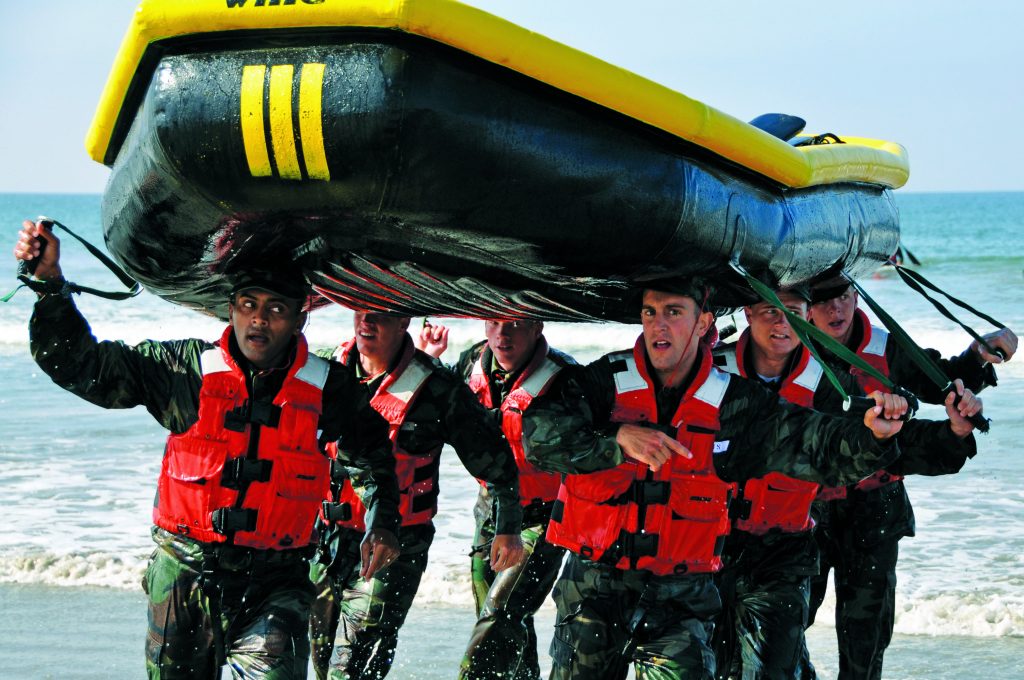Help your team build resilience and embrace adversity.
As leaders, part of our job is to do everything possible to help our teams meet or exceed expectations. Leaders typically are not very imaginative in how they build their strategy for success — it is common for many to simply copy the best organizations and build off their approach.
No reason to recreate the wheel, right? Just do what you see successful leaders and teams doing. It sounds so simple, but as jazz great Thelonious Monk famously said, “Simple ain’t easy.”
Why is it so difficult to replicate organizational greatness? Even if you have the same talent level in your people, the same training and the same organizational structure, results often still fall short. What are we missing?
For part of the answer, I encourage you to look past the obvious and venture into the world of the intangible. More than 1,800 years ago, Roman emperor and stoic philosopher Marcus Aurelius was quoted as saying, “The secret to all victory lies in the organization of the non-obvious.” It is in this quote that I believe we find a largely untapped source of power capable of developing a team to its full potential. That untapped source of power is a collective mindset in your organization to “embrace the suck.”
Talent Isn’t Enough to Develop Resilient Members of Your Team
With 26 years of active-duty service as a naval officer, including many of those years in the U.S. Navy SEAL community, I have seen first-hand the power of mindset.
To drive home the importance of mindset, consider this scenario:
The fog of war could not have been thicker. The billowing smoke overwhelmed us. Shouted orders could barely be heard over the roaring gunfire. Chaos persisted! We had not slept a wink in days. Adrenaline continued to fuel us beyond our physical and psychological limits.
Then, without warning, we lost another teammate. I was told we had now lost seven. To lose some of our most talented and accomplished warriors was inconceivable.
Two of the seven were All-American athletes. Three were physical juggernauts, standing over 6 feet tall, between 190 and 210 pounds of chiseled steel, and able to run like the wind. The final two had crushed every test up until that point, especially the obstacle course and other upper body challenges.
How was it possible that these superstars were all gone?
These were not casualties on some faraway battlefield. They were candidates failing to meet the standard on the sunny beaches of Coronado, California. This same, sad scenario plays out six to eight times every year during “Hell Week,” a grueling part of the Navy’s Basic Underwater Demolition/SEAL training (BUD/S), one of the most notorious military tests out there. The seven BUD/S candidates all decided to voluntarily “ring the bell” and quit training because they did not have the mindset to navigate and thrive under extreme pressure and adversity.
Developing Leaders the Navy SEALs Way
“Hell Week” is a grueling test during training for the Navy’s SEAL special operations force, where candidates only get four total hours of sleep over the course of five days. The instructors mercilessly apply pressure and adversity through arduous physical challenges and the extreme sleep deprivation, issuing orders with incomplete information, changing conditions and expectations constantly, limiting resources, applying the misery of cold water, and leveraging any other means possible to confuse, disorient and make the candidates as uncomfortable as possible.
Everything is an unknown. You do not know when “Hell Week” will begin, what will be required, or when it will end. The uncertainty and pressure are designed to push candidates to their limits in a controlled, safe environment.
Even after training, this is how the SEAL culture functions. Leaders relentlessly apply pressure and adversity on every level in every domain. They demand their team members adapt and learn in order to make navigating and thriving under these daunting conditions second nature.
The SEAL community has a phrase, “Become comfortable with being uncomfortable.” That’s the zone where growth becomes possible.
As a former SEAL instructor, I can tell you that most candidates who quit during “Hell Week” have the physical ability to complete training. Then why would they quit? As Marcus Aurelius pointed out, the answer is found in the non-obvious, something we cannot readily see. Those seven BUD/S candidates quit because they were unable to mentally cope with the pressure, and they did not have a strategy to persevere.
SEAL instructors often bark the saying “embrace the suck” at candidates to help them understand the mindset they will need to complete training. “Embracing the suck” not only forces you to welcome physical challenges but psychological, emotional and intellectual challenges as well. When you can truly “embrace the suck,” you own the pressure and turn it into your competitive advantage. This is a skill all leaders should want their teammates to possess, no matter their profession.

Not Just a Developmental Tool for Navy SEALs
There is an interesting movement sweeping the world where people are subjecting themselves to extreme challenges, with an increase in “Ironman Triathlons,” “Spartan Races,” and other unique adversity competitions such as the “Naked and Afraid” reality television show and The Haunting event challenges in the “Call of Duty: Warzone” video game. These seemingly crazy activities are all designed to push participants to their physical and emotional limits.
Why are people doing this? Human nature tells us to seek safety and comfort, yet these competitions push us in the exact opposite direction. As participants persevere through these artificial adversity challenges, they become more effective at navigating real adversity in both their professional and personal lives. Just like when lifting weights, when you progressively increase the resistance, you grow.
Anyone can take advantage of this approach and strategy; you do not need to be a SEAL or an Ironman triathlete to leverage this powerful process. When you deliberately and systematically use pressure and adversity as a tool to train your team, they can become more effective when actual adversity inevitably hits.
When we do not have a strategy to handle pressure, we often fall into what psychologists call the “fight, flight or freeze” response, which is baked into our DNA through evolution. Symptoms include tunnel vision, brain lock, nauseousness and a racing heart rate — self-preservation mechanisms that kick in whenever we feel threatened. While these reactions may help us survive in truly life-threatening situations, they can negatively impact performance in endeavors that are not life-or-death.
A team mindset of owning pressure and thriving through adversity does not happen by accident; it happens because leaders take the time to train their teams to be able to thrive under adverse conditions.
Leaders should get creative in training their teams this way. For example, I will assign a group project with a two-week window for completion, but at the five- or six-day mark, change the timeline from 14 days to 10 days to see how teammates respond. In another example, I set up a remote sales video call with an “important” prospective client. Minutes before the call is to begin, I tell the teammate running the call that a recording of it will be used by the chief operating officer to evaluate their performance.
These are two simple ways to increase pressure and create adversity. It is important to provide constructive analysis and recommendations after each of these scenarios in order for your teammates to grow and develop.
Mindset is important in everything we do, and it is established by your organization’s professional development program, the daily narrative you communicate to your team, and your culture.
Challenge vs. Threat? Your Choice
If your team views a difficult situation as threatening, it will trigger the “fight, flight or freeze” response. This is typically not ideal for performance.
But if your team looks at the same situation as a challenge, optimal performance becomes possible.
In the SEAL community, instructors use the saying “embrace the suck” to help establish a challenge mindset. Every SEAL comes to expect that they will be subjected to relentless pressure and challenges throughout their career; armed with a challenge mindset, these warriors grow and become comfortable with being uncomfortable. This ultimately creates the skills necessary to own the pressure and overcome adversity in all of its forms.
If leaders want to help their teams exceed expectations, they must deliberately and incrementally increase the adversity their teams face so they can develop new, empowering ways to respond. As team members hone their challenge mindset, they will become more effective when it matters most, especially against competition. And it will give them a competitive advantage, both at work and in life.
Mindset is important in everything we do, and it is established by your organization’s professional development program, the daily narrative you communicate to your team, and your culture.

Capt. Tom Chaby USN Retired
Tom Chaby served for 26 years in the U.S. Navy. During his career, he led special operations at every level in over 70 countries, including Iraq and Afghanistan. In addition to commanding SEAL Team FIVE, he served as the deputy commanding officer of SEAL Training Command, and was a former SEAL instructor. Chaby is a consultant with T3 Advantage and Victory Road, helping organizations build team effectiveness.





